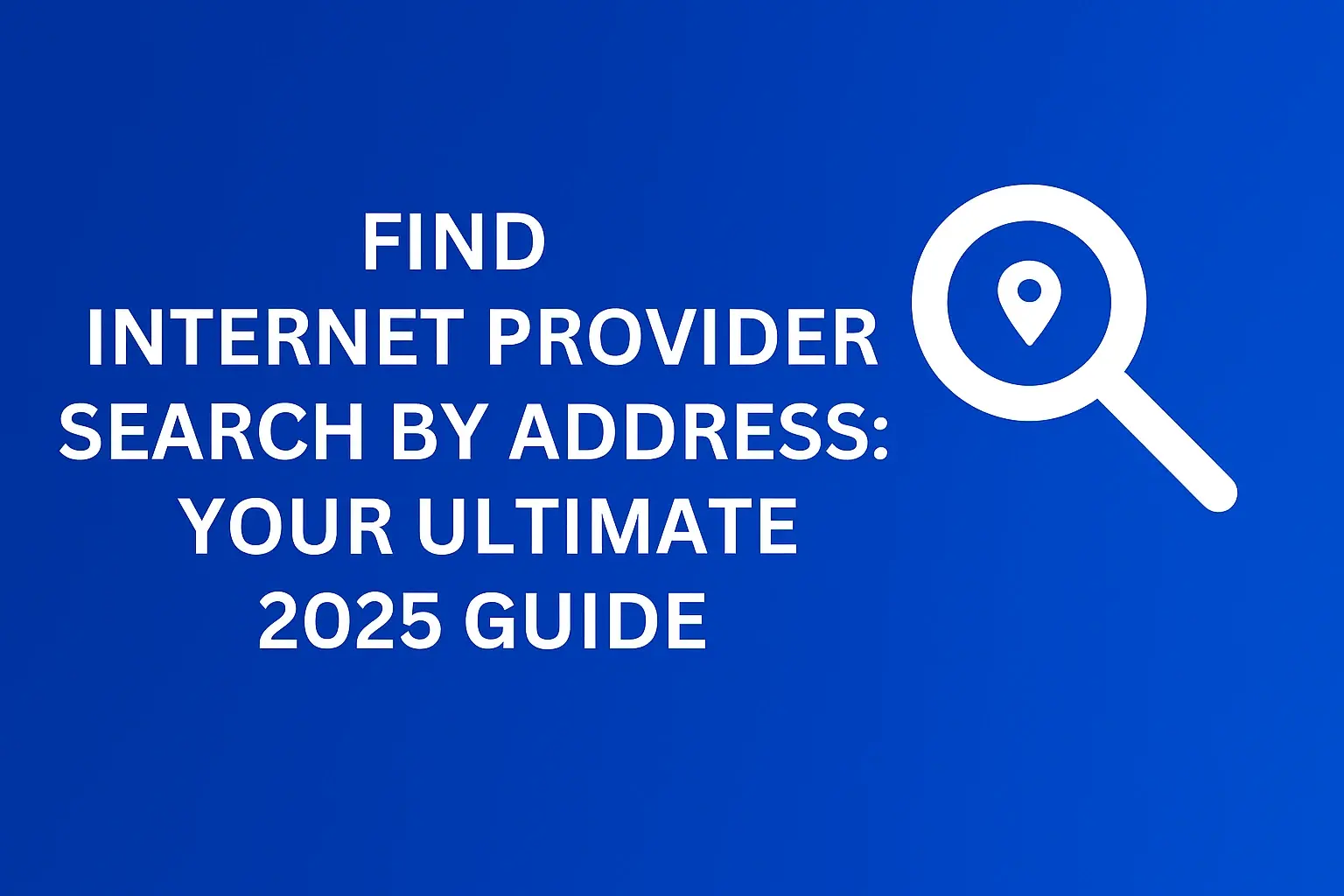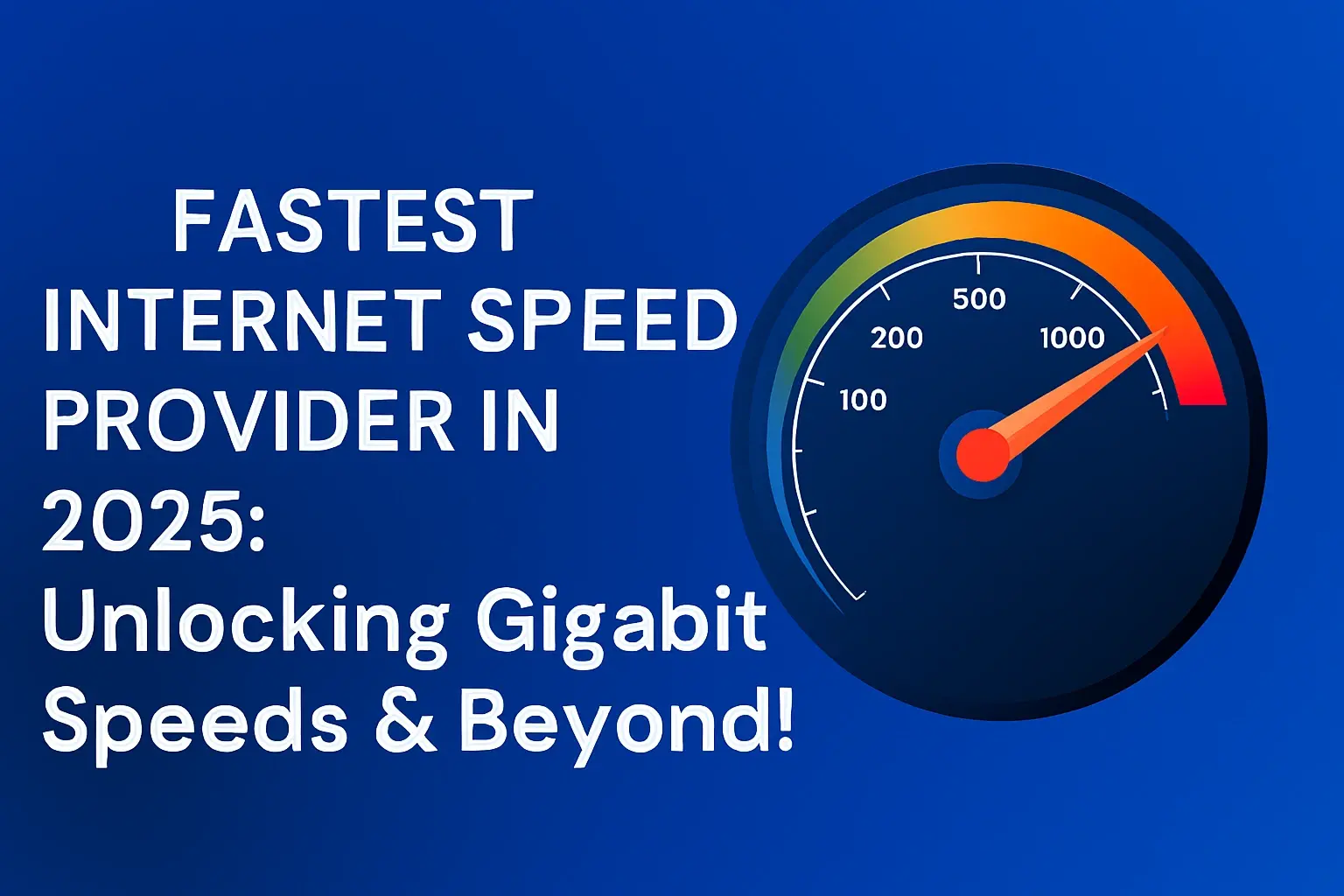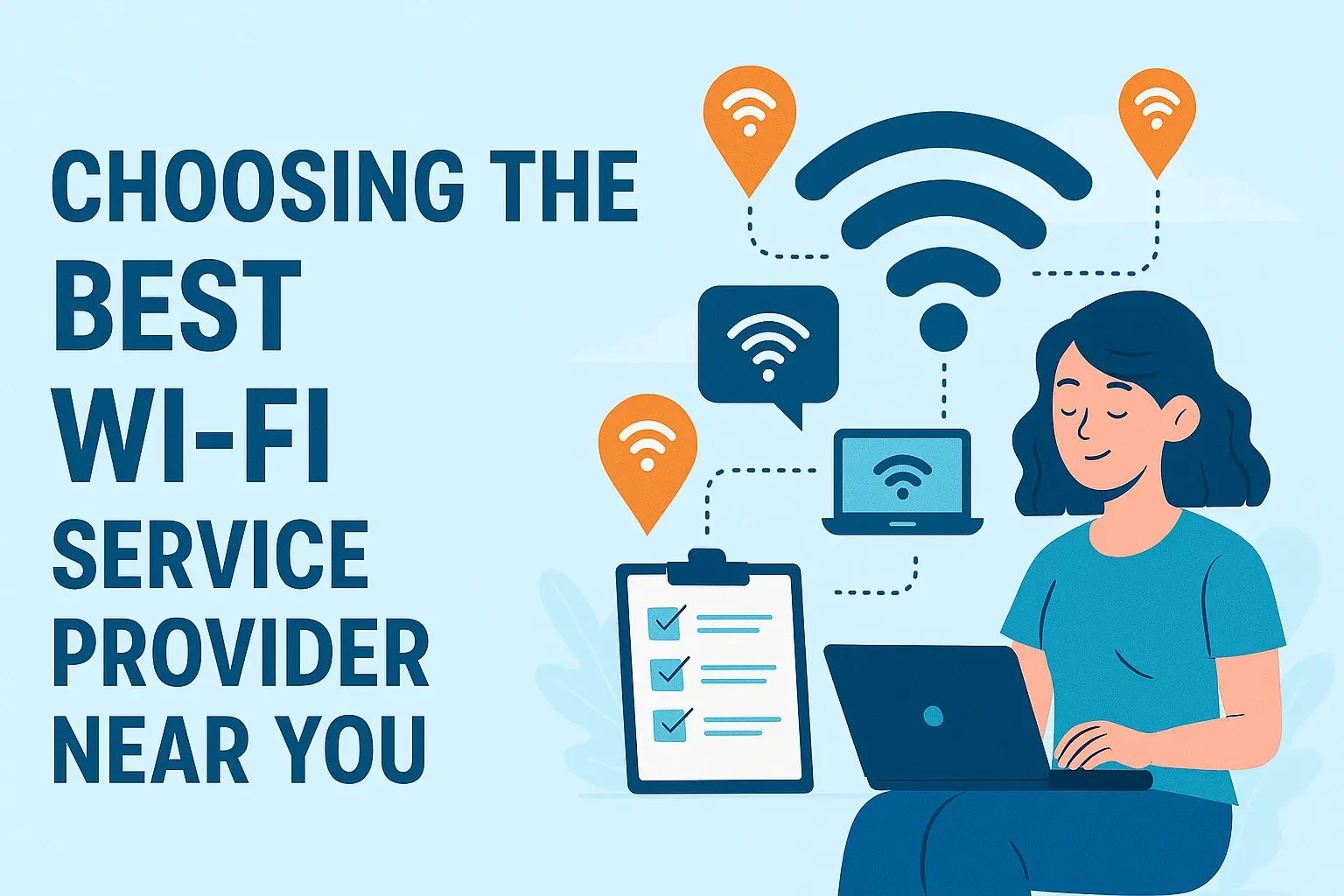Protecting Your Privacy in the Age of Default AI

In an era where artificial intelligence is increasingly integrated into our daily lives, understanding and actively protecting your digital privacy is paramount. This guide offers actionable strategies to safeguard your personal information against the pervasive reach of default AI systems.
Understanding AI's Privacy Landscape
The rapid proliferation of artificial intelligence (AI) has ushered in an era of unprecedented convenience and efficiency. From personalized recommendations on streaming services to predictive text on our smartphones, AI is woven into the fabric of our digital existence. However, this seamless integration comes with a significant caveat: the potential for pervasive data collection and the erosion of personal privacy. By 2025, it's estimated that the amount of data generated globally will reach an astonishing 180 zettabytes, a substantial portion of which is collected and processed by AI algorithms. Understanding the inherent risks is the first crucial step in effectively protecting your privacy.
The Pervasive Nature of AI Data Collection
AI systems, by their very design, thrive on data. The more data they process, the more accurate and sophisticated they become. This fundamental principle means that almost every interaction with an AI-powered service or device can contribute to a growing profile of your habits, preferences, and even your most intimate details. This data can range from your search queries and browsing history to your voice commands, location data, and even biometric information. The challenge lies in the often opaque and default nature of this collection. Users frequently grant broad permissions without fully comprehending the extent of data being gathered.
What is "Default AI"?
"Default AI" refers to the artificial intelligence functionalities that are pre-activated or automatically enabled in software, devices, and online services. These are the AI features that operate without explicit user configuration or consent beyond the initial terms of service acceptance. Examples include voice assistants that are always listening for wake words, predictive typing algorithms that learn your writing style, and recommendation engines that continuously analyze your viewing or purchasing habits.
Key Privacy Risks Associated with AI
The risks to privacy in the age of AI are multifaceted and evolving. These risks can be broadly categorized into several key areas:
1. Unwanted Surveillance and Profiling
AI systems excel at pattern recognition. This capability, while useful for services, can be leveraged to create highly detailed profiles of individuals. These profiles can be used for targeted advertising, but also for more concerning purposes such as predictive policing, insurance risk assessment, or even by employers to gauge employee behavior. The sheer volume of data collected means that even seemingly innocuous information can contribute to a comprehensive understanding of your life.
2. Data Breaches and Security Vulnerabilities
The vast repositories of data collected by AI systems represent lucrative targets for cybercriminals. A single data breach can expose millions of users' sensitive information, leading to identity theft, financial fraud, and reputational damage. AI systems themselves can also be vulnerable to adversarial attacks, where malicious actors manipulate the AI's learning process or exploit its decision-making capabilities.
3. Algorithmic Bias and Discrimination
AI systems learn from the data they are trained on. If this data reflects existing societal biases, the AI will perpetuate and even amplify them. This can lead to discriminatory outcomes in areas like loan applications, hiring processes, and even criminal justice. While not directly a privacy *violation*, biased AI can lead to unfair treatment based on protected characteristics, which is often linked to personal data.
4. Lack of Transparency and Control
One of the most significant challenges is the lack of transparency regarding how AI systems collect, process, and use personal data. Users often have little insight into what data is being gathered, how it's being analyzed, or who it's being shared with. This lack of control makes it difficult to make informed decisions about privacy.
5. Re-identification of Anonymized Data
Even when data is ostensibly anonymized, advanced AI techniques can often be used to re-identify individuals by cross-referencing different datasets. This means that data believed to be safe might still pose a privacy risk.
In 2025, the sophistication of AI in analyzing and correlating disparate data points is significantly higher than ever before. This necessitates a proactive approach to privacy management, moving beyond passive acceptance of default settings.
Identifying Where AI Collects Your Data
To effectively protect your privacy, you must first understand the various touchpoints where AI actively collects your data. These points are often subtle and integrated into the services and devices we use daily. Recognizing these sources is the foundational step in regaining control over your digital footprint.
Smart Devices and The Internet of Things (IoT)
Smart home devices, wearables, and connected appliances are prime examples of AI-driven data collectors. Voice assistants like Amazon Alexa, Google Assistant, and Apple's Siri are designed to constantly listen for wake words, processing vast amounts of spoken data. Smart TVs collect viewing habits, smart thermostats learn your daily routines, and fitness trackers monitor your physical activity and biometrics. By 2025, the average household is projected to have over 50 connected devices, each a potential source of personal information.
Voice Assistants
Every command, question, and even ambient conversation picked up by a smart speaker can be recorded and analyzed. While companies often state this data is used to improve services, it can also be used for profiling and targeted advertising. The "always listening" nature, even when not actively invoked, raises significant privacy concerns.
Wearable Technology
Smartwatches, fitness bands, and other wearables collect intimate physiological data such as heart rate, sleep patterns, step counts, and even ECG readings. This data, while valuable for health insights, can reveal sensitive information about your well-being and lifestyle.
Smart Appliances and Home Systems
From smart refrigerators that track your grocery habits to smart security cameras that monitor your home, these devices generate data about your daily routines, consumption patterns, and presence within your living space.
Online Services and Applications
The internet remains a primary arena for AI-driven data collection. Every website you visit, every app you use, and every online interaction can be a source of data.
Search Engines
Search engines like Google use AI to understand your queries, personalize results, and track your search history. This data is crucial for their advertising models, building detailed profiles of your interests and intentions.
Social Media Platforms
Platforms such as Facebook, Instagram, TikTok, and X (formerly Twitter) employ sophisticated AI algorithms to analyze your posts, likes, shares, connections, and browsing behavior. This information is used for content curation, ad targeting, and understanding user sentiment.
E-commerce and Retail
Online retailers utilize AI to track your browsing history, purchase patterns, abandoned carts, and product reviews. This data fuels personalized recommendations, dynamic pricing, and targeted marketing campaigns.
Streaming Services
Netflix, Spotify, and other streaming platforms use AI to analyze your viewing and listening habits, recommending content and influencing your choices. This data can also reveal your mood, interests, and even your social connections.
Productivity and Communication Tools
Even tools designed for work and communication are increasingly incorporating AI. Predictive text, grammar checkers, email filtering, and meeting transcription services can all process and analyze your written and spoken communications.
Mobile Applications
Most mobile apps, from games to utility tools, request a range of permissions that allow them to access your location, contacts, photos, microphone, and more. AI within these apps can analyze this data for various purposes, often extending beyond the app's core functionality.
Location Services
Apps that utilize GPS and Wi-Fi data can track your movements, creating a detailed log of your whereabouts. This data is valuable for location-based advertising, traffic analysis, and understanding your daily commute or travel patterns.
In-App Analytics and Advertising SDKs
Many apps embed Software Development Kits (SDKs) that collect user data for analytics and advertising purposes. These SDKs can track user behavior across multiple apps and websites, contributing to a broader online profile.
AI-Powered Software and Features
Beyond specific devices and platforms, AI is integrated into operating systems and individual software applications.
Operating System Features
Modern operating systems (Windows, macOS, iOS, Android) include AI-powered features like facial recognition for unlocking devices, intelligent search functions, and personalized notifications. These features often operate with default settings that enable data collection.
Content Creation and Editing Tools
AI-powered writing assistants, image generators, and video editing software can process your creative output, learning your style and preferences. This data can be used to improve the tools or, in some cases, to train broader AI models.
By 2025, the lines between these categories are blurring. A single smart speaker might interact with multiple online services, all contributing to a complex web of data about you. Awareness of these collection points is the critical first step towards implementing effective privacy safeguards.
Strategies for Minimizing Your Digital Footprint
Once you understand where AI collects your data, the next logical step is to actively minimize the amount of information you share. This involves a conscious effort to reduce your digital footprint, making yourself a less attractive target for data harvesting and profiling. Data minimization is not about disconnecting entirely, but about being deliberate and selective in your online activities and device usage.
Review and Adjust App Permissions Regularly
Mobile applications are notorious for requesting broad permissions that often exceed their functional needs. By 2025, the average smartphone user has dozens of apps installed, each with its own set of permissions. Regularly auditing these permissions is crucial.
Step-by-Step Guide to Reviewing App Permissions (Android & iOS):
- Access Settings: Navigate to your device's main 'Settings' menu.
- Find Privacy/App Permissions: Look for a 'Privacy' or 'Apps' section, then 'Permission Manager' or similar.
- Review Each App: Go through your installed applications one by one.
- Assess Necessity: For each permission (e.g., Location, Camera, Microphone, Contacts), ask yourself: "Does this app *truly* need this permission to function as intended?"
- Revoke Unnecessary Permissions: If an app requests a permission that isn't essential, revoke it. For example, a calculator app doesn't need access to your contacts or microphone.
- Set Location Permissions Wisely: Opt for "While Using the App" or "Ask Next Time" instead of "Always Allow" for location services whenever possible.
- Be Wary of Microphone and Camera Access: Grant these permissions only to apps where they are fundamental to the user experience (e.g., video conferencing, camera apps).
Limit Data Sharing with Online Services
Most online platforms offer settings that allow you to control how your data is used. Actively configuring these settings can significantly reduce the amount of data used for profiling and advertising.
Social Media Settings Optimization:
- Privacy Checkups: Utilize the built-in privacy checkup tools offered by platforms like Facebook and Instagram.
- Limit Post Visibility: Set your posts to be visible only to friends or specific groups, rather than public.
- Disable Ad Personalization: Explore ad settings to opt out of personalized advertising based on your activity.
- Review Connected Apps: Regularly check which third-party apps have access to your social media accounts and revoke access for any you no longer use or trust.
Search Engine Privacy:
- Use Private Browsing Modes: While not foolproof, incognito or private browsing modes prevent your search history from being saved locally.
- Opt-out of Search History Tracking: Many search engines allow you to disable the saving of your search history.
- Consider Privacy-Focused Search Engines: Explore alternatives like DuckDuckGo, which do not track your searches.
Be Mindful of Smart Device Usage
Smart devices, while convenient, are significant data collectors. Implementing specific strategies can help mitigate their privacy impact.
Voice Assistants:
- Review and Delete Voice Recordings: Most voice assistants allow you to review and delete past voice recordings. Make this a regular habit.
- Disable "Always Listening": Some devices offer the option to disable the "always listening" feature, requiring a button press to activate.
- Limit Skills/Actions: Only enable skills or actions from trusted developers.
Wearables:
- Review Data Sharing Settings: Check the companion app for your wearable device and limit data sharing with third parties.
- Consider Data Sensitivity: Be aware that detailed health data is being collected and stored.
Practice Safe Browsing Habits
Your online browsing behavior is a rich source of data for AI. Adopting safer habits can reduce this collection.
Use a Virtual Private Network (VPN):
A VPN encrypts your internet traffic and masks your IP address, making it harder for websites and AI systems to track your online activity and location. By 2025, VPN usage is expected to continue its upward trend as privacy concerns grow.
Install Ad Blockers and Tracker Blockers:
Browser extensions like uBlock Origin, Privacy Badger, and Ghostery can block intrusive ads and the trackers embedded within them, significantly reducing data collection.
Clear Cookies and Cache Regularly:
Website cookies store information about your browsing habits. Regularly clearing your browser's cookies and cache can help remove this tracking data.
Be Skeptical of "Free" Services:
If a service is free, it's highly likely that you are paying with your data. Understand the trade-off and consider whether the service is worth the privacy cost.
Secure Your Home Network
Your home Wi-Fi network is the gateway to your connected devices. Securing it is paramount.
Strong Wi-Fi Password:
Use a strong, unique password for your Wi-Fi network and change it regularly.
Enable Network Encryption:
Ensure your router is using WPA2 or WPA3 encryption.
Guest Network:
If your router supports it, set up a separate guest network for visitors and less trusted devices.
Data minimization is an ongoing process. By consistently applying these strategies, you can significantly reduce the amount of personal data available to AI systems, thereby enhancing your privacy in the digital age.
Leveraging Privacy Settings and Tools
Beyond minimizing data collection, actively utilizing available privacy settings and specialized tools is essential for robust protection against AI-driven surveillance. In 2025, the landscape of privacy tools has matured, offering more sophisticated options for individuals seeking to regain control over their digital lives. This section delves into practical tools and settings that empower users.
Browser Settings and Extensions
Your web browser is a primary interface for interacting with the internet, making its privacy settings and extensions critical.
Browser-Specific Privacy Features:
- Chrome: Utilize Incognito mode, manage site permissions (location, camera, microphone), review ad personalization settings, and clear browsing data.
- Firefox: Known for its strong privacy focus, Firefox offers Enhanced Tracking Protection by default, which blocks many trackers. Users can further customize this protection.
- Safari: Apple's browser includes Intelligent Tracking Prevention (ITP), which limits cross-site tracking. Users can also manage website data and permissions.
Essential Privacy Extensions (2025 Landscape):
These extensions work in conjunction with your browser to enhance privacy:
- Ad Blockers: uBlock Origin is highly recommended for its efficiency and broad blocking capabilities.
- Tracker Blockers: Privacy Badger learns to block invisible trackers by observing your browsing habits.
- HTTPS Everywhere: This extension (from the EFF) automatically switches your connection to a secure HTTPS version of a website whenever available, encrypting your communication.
- Cookie Management Tools: Extensions like Cookie AutoDelete automatically delete cookies from closed tabs, preventing persistent tracking.
- Password Managers: Tools like Bitwarden, 1Password, or LastPass securely store and generate strong, unique passwords for all your accounts, reducing the risk of breaches due to weak credentials.
Operating System Level Privacy Controls
Both Windows and macOS, as well as mobile operating systems like iOS and Android, offer built-in privacy controls that can be configured to limit data collection.
Windows Privacy Settings:
- Privacy Dashboard: Access through Settings > Privacy. Review permissions for Location, Camera, Microphone, Notifications, Account Info, etc.
- Advertising ID: Disable the Advertising ID to prevent apps from using it for personalized ads.
- Telemetry and Diagnostics: Adjust settings for diagnostic data collection, opting for "Required" over "Optional" where possible.
macOS Privacy Settings:
- System Settings > Privacy & Security: Manage permissions for Location Services, Contacts, Calendar, Photos, Microphone, Camera, etc.
- Tracking: Opt out of app tracking across other companies' apps and websites.
- Analytics & Improvements: Choose to share diagnostic and usage data with Apple or not.
iOS Privacy Settings:
- Settings > Privacy & Security: This is the central hub for managing Location Services, Contacts, Calendars, Photos, Microphone, Camera, Tracking, etc.
- App Tracking Transparency (ATT): Crucial for limiting ad tracking by apps. Ensure this is enabled.
- Mail Privacy Protection: Prevents senders from tracking your email opens.
- Safari Settings: Enable "Prevent Cross-Site Tracking" and "Block All Cookies" (with caution, as it may break some sites).
Android Privacy Settings:
- Settings > Privacy: Manage permissions for Location, Camera, Microphone, Contacts, Call logs, SMS, etc.
- Google Privacy Settings: Access through Settings > Google > Manage your Google Account > Data & privacy. Review and manage Web & App Activity, Location History, and YouTube History.
- Advertising Settings: Opt out of ad personalization.
Encryption Tools
Encryption is a fundamental privacy tool that renders data unreadable to unauthorized parties.
Full Disk Encryption:
Ensure your operating system's full disk encryption is enabled (e.g., BitLocker on Windows, FileVault on macOS, and native encryption on modern iOS/Android devices). This protects your data if your device is lost or stolen.
Encrypted Messaging Apps:
For secure communication, use end-to-end encrypted messaging apps like Signal or WhatsApp (though Signal is generally considered more privacy-focused due to its minimal data collection). These ensure only the sender and recipient can read messages.
Secure Email Services:
Consider using privacy-focused email providers like ProtonMail or Tutanota, which offer end-to-end encryption for emails sent between users of the same service.
Network Privacy Tools
Tools that protect your network traffic are vital for preventing AI from tracking your online activities.
Virtual Private Networks (VPNs):
A reputable VPN service encrypts your internet connection and routes your traffic through a server in a location of your choice, masking your IP address. Key features to look for in 2025 include a strict no-logs policy, strong encryption protocols (like OpenVPN or WireGuard), and a wide server network. Examples include NordVPN, ExpressVPN, and ProtonVPN.
DNS Privacy:
Your Domain Name System (DNS) queries can reveal which websites you visit. Using a private DNS service (e.g., Cloudflare's 1.1.1.1 or Google Public DNS) can add another layer of privacy to your browsing.
Data Management and Deletion Tools
While proactive minimization is key, sometimes you need to actively remove data that has already been collected.
Account Deletion:
Regularly review your online accounts. If you no longer use a service, actively seek out and use its account deletion feature. Be aware that some services retain data for a period after deletion.
Data Request Tools (GDPR/CCPA):
If you are in a region with strong data protection laws (like GDPR in Europe or CCPA in California), you have the right to request access to the data companies hold about you and to request its deletion. Many large tech companies have specific portals or processes for these requests.
By understanding and strategically deploying these privacy settings and tools, you can significantly fortify your defenses against the pervasive data collection of AI systems. This active engagement is crucial for maintaining control over your personal information in the digital age.
Navigating AI in Everyday Applications
Artificial intelligence is no longer a futuristic concept; it's deeply embedded in the applications we use daily. From our smartphones and computers to our entertainment and communication platforms, AI influences our experiences. Navigating these applications requires a conscious effort to manage privacy settings and understand how AI is being used. By 2025, the sophistication of these AI integrations has only increased, making informed usage more critical than ever.
Smartphones and Mobile Operating Systems
Your smartphone is a powerful AI hub, collecting vast amounts of data. Proactive management of its settings is paramount.
Voice Assistants (Siri, Google Assistant):
- Review and Delete History: Regularly access your voice assistant's settings to review and delete past interactions. For Google Assistant, this is under "My Activity." For Siri, it's often managed through iCloud settings and Apple's privacy portal.
- Limit "Hey Siri" / "Ok Google" Listening: If possible, disable the "always listening" feature to prevent accidental activation and constant audio processing.
- Control App Access: Ensure voice assistants only have access to necessary app integrations.
Camera and Photos:
- AI-Powered Features: Many camera apps use AI for scene recognition, image enhancement, and object detection. Be aware that this processing occurs on your device or in the cloud.
- Facial Recognition: If enabled for photo organization, understand that your biometric data (facial features) is being processed and stored.
- Location Tagging: Disable geotagging for photos if you don't want location data embedded in your image files.
Keyboard and Text Prediction:
- Learning Your Style: Predictive text and autocorrect algorithms learn your writing patterns, vocabulary, and common phrases.
- Data Storage: Understand whether this learned data is stored locally on your device or synced to the cloud. Opt for local storage if available.
- Disable if Necessary: If you have significant privacy concerns, consider disabling predictive text features.
Social Media Platforms
Social media is a prime example of AI-driven personalization and data monetization.
Personalized Feeds and Recommendations:
- Algorithmic Curation: AI algorithms determine what content you see, based on your past interactions, connections, and inferred interests.
- "Why am I seeing this?" Feature: Utilize these features to understand the AI's reasoning behind specific content recommendations and adjust your preferences.
- Limit Engagement: Be mindful that every like, share, comment, and even time spent viewing content feeds the AI.
Targeted Advertising:
- Ad Preferences: Regularly review and adjust your ad preferences within each platform. Opt out of categories that you find intrusive or inaccurate.
- Ad Settings: Look for options to limit ad personalization based on your activity on other websites and apps.
Content Moderation and AI:
- Automated Detection: AI is used to detect and flag harmful content, misinformation, and spam. While beneficial, it can sometimes lead to errors or over-censorship.
- Reporting Mechanisms: Understand how to report content that violates community guidelines or your privacy.
Streaming Services (Video & Music)
AI is the engine behind personalized recommendations on platforms like Netflix, Spotify, and YouTube.
Recommendation Algorithms:
- Viewing/Listening Habits: AI analyzes what you watch or listen to, how long you engage, and what you skip to suggest new content.
- Implicit Feedback: Your engagement (or lack thereof) is a powerful signal to the AI.
- "Not Interested" / "Dislike" Options: Use these features to actively guide the AI away from certain content types.
- Profile Management: Utilize separate profiles for different users within a household to keep recommendation data distinct.
Content Discovery:
While AI enhances discovery, it can also create filter bubbles, limiting exposure to diverse content. Actively seek out content outside of your usual recommendations.
Productivity and Communication Tools
Even tools designed for work and communication are increasingly incorporating AI features.
Email Clients:
- Spam Filters: AI powers intelligent spam and phishing detection.
- Smart Replies/Composing: Features that suggest responses or help draft emails learn from your communication style. Review these suggestions carefully before sending.
- Data Processing: Be aware that your emails are processed by AI for these features.
Word Processors and Writing Assistants:
- Grammar and Style Checkers: AI analyzes your writing for errors and suggests improvements.
- AI Writing Tools (e.g., Grammarly, Microsoft Editor): These tools process your text to offer suggestions. Understand their data policies regarding the content you input.
- Cloud Syncing: If you use cloud-synced writing tools, ensure the syncing and storage of your documents are secure.
Video Conferencing Software:
- Noise Cancellation: AI algorithms filter out background noise.
- Transcription Services: Many platforms offer AI-powered transcription of meetings. Understand who has access to these transcripts and how they are stored.
- Virtual Backgrounds: AI is used for background segmentation and replacement.
Online Shopping and E-commerce
AI plays a significant role in shaping your online shopping experience.
Personalized Recommendations:
- "Customers who bought this also bought..." AI analyzes purchase history and browsing behavior to suggest related products.
- Dynamic Pricing: Prices may be adjusted based on AI analysis of demand, your browsing history, and other factors.
- Targeted Promotions: AI determines which deals and discounts are most likely to appeal to you.
Chatbots and Customer Service:
- AI-Powered Support: Many e-commerce sites use AI chatbots to handle initial customer inquiries. Be aware that you are interacting with an AI, and sensitive information should be handled with caution.
Navigating these applications effectively involves a combination of understanding their AI functionalities, actively managing privacy settings, and making conscious choices about the data you share. By staying informed and proactive, you can harness the benefits of AI while mitigating its privacy risks.
Legal and Ethical Considerations in the AI Age
As AI systems become more sophisticated and pervasive, the legal and ethical frameworks surrounding data privacy and AI usage are constantly evolving. In 2025, understanding these considerations is crucial for both individuals and organizations. The intersection of AI, data, and individual rights presents complex challenges that require careful navigation.
Data Protection Laws and Regulations
Governments worldwide are implementing and refining laws to protect personal data in the digital age, with AI posing new challenges for compliance.
General Data Protection Regulation (GDPR):
The GDPR, enacted in the EU, sets a high standard for data privacy. It grants individuals significant rights, including the right to access, rectification, erasure, and restriction of processing of their personal data. For AI systems, this means that data used for training and operation must be processed lawfully, fairly, and transparently, with explicit consent often required for sensitive data. Organizations deploying AI must demonstrate accountability and conduct Data Protection Impact Assessments (DPIAs) for high-risk processing activities.
California Consumer Privacy Act (CCPA) / California Privacy Rights Act (CPRA):
In the United States, the CCPA and its successor, the CPRA, grant California residents similar rights to those under GDPR, including the right to know what personal information is collected, the right to request deletion, and the right to opt-out of the sale of personal information. AI companies must be transparent about their data collection practices and provide mechanisms for consumers to exercise these rights.
Other Global Regulations:
Many other countries and regions are enacting similar data protection laws (e.g., LGPD in Brazil, PIPA in South Korea, PIPEDA in Canada). Organizations operating internationally must navigate this complex web of regulations, ensuring their AI systems comply with all applicable laws.
Ethical AI Principles
Beyond legal compliance, ethical considerations are paramount in the development and deployment of AI. These principles guide responsible AI innovation.
Fairness and Non-Discrimination:
AI systems must be designed and trained to avoid bias and discrimination based on race, gender, age, religion, or other protected characteristics. This requires careful auditing of training data and algorithms to identify and mitigate biases. For instance, an AI used for hiring should not unfairly disadvantage candidates based on demographic factors inferred from their data.
Transparency and Explainability:
It should be possible to understand how an AI system arrives at its decisions, especially when those decisions have a significant impact on individuals. This "explainability" is crucial for building trust and enabling accountability. For example, if an AI denies a loan application, the applicant should ideally be able to understand the reasons why.
Accountability:
There must be clear lines of responsibility when AI systems cause harm. Developers, deployers, and users of AI should be held accountable for the outcomes of their AI systems. This is particularly relevant for autonomous systems where decision-making is decentralized.
Human Oversight:
In critical applications, human oversight remains essential. AI should augment, not entirely replace, human judgment, especially in areas with high stakes, such as healthcare, law enforcement, and critical infrastructure.
Privacy by Design and by Default:
Privacy considerations should be integrated into the design of AI systems from the outset ("privacy by design") and the most privacy-protective settings should be enabled by default ("privacy by default"). This proactive approach is far more effective than trying to bolt on privacy measures later.
The Right to be Forgotten and Data Erasure
The concept of the "right to be forgotten," popularized by GDPR, allows individuals to request the removal of their personal data under certain circumstances. In the context of AI, this presents challenges. If an individual's data is part of a large, complex AI training dataset, its complete erasure can be technically difficult or impossible without significantly degrading the AI's performance. By 2025, legal interpretations and technical solutions for balancing this right with AI development are still being explored.
AI and Consent Management
Obtaining valid consent for data processing is a cornerstone of data protection. With AI, consent management becomes more complex:
- Granularity of Consent: Can users provide consent for specific AI uses, or is it an all-or-nothing proposition?
- Informed Consent: Are users truly informed about how their data will be used by AI systems, especially when the AI's learning process is dynamic and evolving?
- Revoking Consent: Ensuring that users can easily revoke consent and that their data is removed accordingly is critical.
The Future of AI Regulation
The rapid pace of AI development means that regulations often struggle to keep up. In 2025, we are seeing increased global discussions and initiatives aimed at developing more comprehensive AI governance frameworks. These may include:
- AI-Specific Legislation: Laws specifically tailored to address the unique challenges posed by AI, such as the proposed EU AI Act.
- International Cooperation: Efforts to establish global norms and standards for AI development and deployment.
- Ethical Guidelines and Standards: The development of industry-wide ethical guidelines and technical standards to promote responsible AI.
Navigating the legal and ethical landscape of AI requires ongoing vigilance. Individuals should be aware of their rights, and organizations must prioritize ethical considerations and legal compliance in their AI initiatives. This dual approach is essential for fostering trust and ensuring that AI benefits society without compromising fundamental rights.
Future-Proofing Your Privacy in the Evolving AI Ecosystem
The landscape of artificial intelligence and its impact on privacy is in constant flux. What seems secure today might be vulnerable tomorrow. Therefore, future-proofing your privacy requires a proactive, adaptable mindset. By anticipating trends and continuously refining your strategies, you can better protect yourself in the long term. In 2025, this means looking beyond current threats and preparing for the next wave of AI advancements.
Stay Informed About Emerging AI Technologies
The pace of AI innovation is relentless. New technologies are constantly emerging, each with its own potential implications for privacy.
- Generative AI: Technologies like large language models (LLMs) and image generators are becoming more sophisticated. Understand how these tools might process your inputs and what data they retain.
- AI in the Metaverse: As virtual and augmented reality spaces develop, AI will play a significant role in shaping user experiences and collecting data within these immersive environments.
- AI and Biometrics: Advances in facial recognition, voice analysis, and gait recognition raise concerns about pervasive biometric surveillance.
Regularly reading reputable tech news sources, following privacy advocates, and engaging with cybersecurity resources will help you stay ahead of the curve.
Cultivate a Privacy-Conscious Digital Hygiene
The habits you develop today will form the foundation of your future privacy. Make privacy a core aspect of your digital life.
- Regular Audits: Periodically review your app permissions, connected accounts, and privacy settings across all your devices and online services. Treat this as a routine maintenance task.
- Data Minimization as a Default: Make it your default behavior to share only the minimum necessary information. Question every request for personal data.
- Strong Password Practices: Continue to use strong, unique passwords and enable multi-factor authentication (MFA) wherever possible. Consider a password manager as a long-term solution.
Advocate for Stronger Privacy Protections
Individual actions are important, but systemic change is also necessary. Your voice can contribute to a more privacy-respecting future.
- Support Privacy Organizations: Consider supporting organizations that advocate for stronger data protection laws and ethical AI development.
- Engage with Policymakers: Stay informed about proposed legislation related to AI and privacy, and consider contacting your representatives to express your views.
- Choose Privacy-Conscious Companies: Whenever possible, support businesses that demonstrate a commitment to user privacy and ethical AI practices.
Prepare for Evolving Threats
As AI capabilities grow, so too will the sophistication of privacy threats.
- Deepfakes and AI-Generated Misinformation: Be critical of online content. AI can now generate highly realistic fake images, audio, and video, making it harder to discern truth from fabrication.
- AI-Powered Phishing and Social Engineering: AI can be used to craft more convincing phishing emails and social engineering attacks, making them harder to detect.
- AI in Surveillance: Expect AI to be increasingly integrated into surveillance systems, both by governments and corporations.
Developing critical thinking skills and maintaining a healthy skepticism towards online information will be crucial defenses.
Embrace Decentralization and Open-Source Solutions
The trend towards centralized data collection by large tech companies poses inherent privacy risks. Exploring decentralized technologies and open-source alternatives can offer greater control.
- Decentralized Social Networks: Platforms built on decentralized architectures aim to give users more control over their data and content.
- Open-Source Software: Open-source applications often have transparent codebases, allowing for greater scrutiny of their privacy practices.
- Self-Hosting: For technically inclined users, self-hosting services can provide ultimate control over data.
The Importance of Education and Awareness
Ultimately, the most powerful tool for future-proofing your privacy is knowledge. Continuously educating yourself and others about AI and privacy is essential. Share what you learn with friends, family, and colleagues. The more aware people are, the more likely they are to take protective measures and demand better privacy standards.
The future of privacy in the age of AI is not predetermined. It will be shaped by the choices we make today. By adopting a forward-thinking approach, staying informed, and actively participating in the conversation around AI and privacy, you can build a more resilient and secure digital future for yourself.
In conclusion, protecting your privacy in the age of default AI is an ongoing and evolving challenge. By understanding the pervasive nature of AI data collection, actively minimizing your digital footprint, leveraging privacy settings and tools, navigating everyday applications with awareness, and staying informed about legal and ethical considerations, you can significantly enhance your digital security. The future demands continuous vigilance and adaptation. Embrace these strategies as a fundamental aspect of your digital life to safeguard your personal information effectively.





